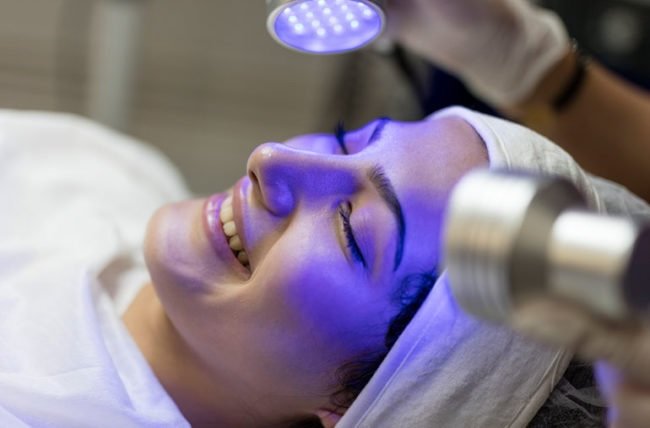Changes in the quality of the skin, fat loss, drooping tissues, and the development of asymmetry are all signs of facial skin aging. Skin lesions (benign and malignant), changes in texture and pigmentation, wrinkles, and large capillaries are all apparent outcomes of this condition.
Every patient receives a custom treatment plan designed to address their unique cosmetic skin concerns. In the past ten years, cutting-edge tools and techniques have been created for the correction of skin flaws and the revitalization of older skin.
There are a variety of medical therapies known collectively as “Light Therapy” that use the use of light or light rays of certain wavelengths to alleviate symptoms and promote healing for numerous injuries.
Patients undergoing light therapy are exposed to sunlight or an artificial light source in a ‘light box,’ with the latter being used to treat primarily seasonal depression and sleep disorders, or a device that emits light waves at specific ultraviolet frequencies, with the latter being used to treat pathological areas of the body.
Your dermatologist may use either red or blue light wavelengths, depending on the nature of your skin problem. In contrast to red light’s anti-aging benefits, blue light is effective in treating acne.
- LEDs don’t give out any harmful UV rays, making them suitable for everyday usage.
- LED light therapy is safe for individuals of all skin types and colors, unlike other anti-aging procedures like chemical peels, dermabrasion, and laser therapy.
- Don’t use this treatment if you’re on Accutane for acne or if your skin is inflamed and prone to breakouts.
- In very rare cases, irritation, redness, and acne may be worsened; however, this is quite uncommon.
- There is a 20-minute timeframe for each LED therapy. After the first 10 weeks, when sessions occur once or twice per month, the frequency is lowered to once per month.
- The usage of LED technology in the house might make trips to beauty salons unnecessary or at least more time efficient. Although the results aren’t terrible, they aren’t very impressive either.
- Consistent usage of this therapy may lead to visible changes in skin over time, but only if you keep up with the sessions.
The red and blue light spectrums used in the therapy each have their own unique therapeutic effects on the skin. A photo therapist may use either blue or red light wavelengths, depending on the nature of your skin disease. Red’s anti-aging powers are the most popular, while blue’s acne-fighting abilities are the most often relied upon.
This method has proven to be rather popular, both in professional spas and at home. Acne, inflammation, and the visible indications of aging may all be mitigated or eliminated with this kind of therapy, which makes use of varying wavelengths of light-emitting diodes. Those who have tried different lotions and solutions for their skin issues without success may benefit from this approach.
This procedure does not produce burns and may be used on persons of any skin tone. Of course, there are a few things worth mentioning. In the first place, this therapy is not always effective and may be rather pricey. If you are using specific drugs or have an active skin problem, you should avoid using this approach. You should talk to a cosmetician about your skin issues and whether or not this approach is right for you.
Is it a good idea to cure your acne with phototherapy?
Acne may be treated using a specific wavelength of light called phototherapy, which has been licensed by the Food and Drug Administration. Light of this spectrum may be seen, but it lacks the harmful components of solar radiation (ultraviolet).
A targeted range that has shown to be very efficient against acne-causing bacteria while inflicting no harm to healthy tissue. The technology shines light onto the patient’s skin at the proper wavelength. A little peeling that removes the stratum corneum before to treatment might sometimes be sufficient to maximize the efficacy of the therapy.
In certain circumstances, an exfoliation is required post-treatment to hasten skin shedding and facilitate recovery.
Conclusion
There are a lot of companies who provide Light treatment goods, but Celluma has the best of the best. Explain why Celluma is preferable to other choices. Celluma’s products are flexible and can be shaped to the contour of the body, which considerably improves the cells’ ability to absorb the ideal amount of light energy and the treatment’s efficacy compared to that of conventional light-therapy devices. The question then becomes, “Why wait?” Light treatment has several advantages, including relief from skin issues and muscle pain, and you can learn more about them by visiting Celluma.com right now.

